How To Make A Window Cornice
How to Build Window Cornices
Updated: January. 17, 2019
Custom-build your own window cornices for one-quaternary the cost of shop-bought
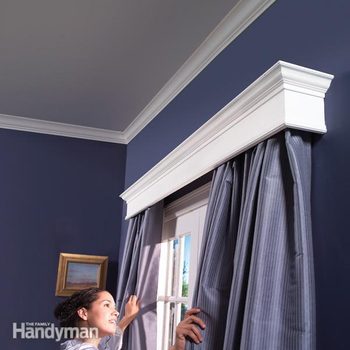
Desire to requite a dreary room a dramatic facelift? Calculation window or door cornices will bring freshness and style to whatsoever room decor. They'll hide ugly drapery rods and add a touch of custom-fabricated detailing that makes an ordinary window or patio door look like something special. The meridian of the cornice can even serve every bit a display shelf for art or collectibles. Cornices are surprisingly easy to build, even the elegant ones you encounter in abode magazines. Using off-the-shelf trim from the home centre and a compound miter saw, anyone with simple carpentry skills tin can create a beautiful window or door cornice in just a few hours. Read on and we'll show yous how to select the materials, assemble the parts and attach the cornice to the wall. We'll as well share design tips to help you lucifer a cornice style to your home decor. Search online for cornice suppliers and you'll meet that y'all tin can save huge coin by edifice your own.
Y'all might also similar: TBD
- Fourth dimension
- Complexity
- Toll
- Multiple Days
- Intermediate
- $51–100
Design the cornice to fit your home
Design elements inside your dwelling should dictate the forest blazon, molding way and finish that you select. Depending on the pattern, the top either overlaps the sides, sometimes with a routed edge, or is nailed to the acme or inside of the box and doesn't prove from below. The tops are best made from 1x4s, 1x6s or 1x8s. There's no need to cut the tops to width if you choose the right combination of top style and board size. The example we show is a 1×6 nailed on acme of the box, which gives an overall inside depth of 4-iii/iv in. For the aforementioned look but with a shallower box, you could also nail a 1×4 inside the box affluent with the meridian for a depth of 3-1/two in. Choose whichever method it takes to clear your defunction.
Other Cornice Pattern Options
A Cornices blueprint options are almost countless. If you're having trouble choosing, here'southward a tip. Buy short lengths of dissimilar types of trim forth with some inexpensive 1x4s and 1x6s. Cut everything to 1-ft. lengths and mock upwardly several dissimilar combinations. Just eject a little wood glue on the pieces and clamp them together for virtually 10 minutes. Hold the cornice mock-ups over the opening to get a experience for the final await.
Select materials and collect key tools
If yous plan to paint your cornices, poplar and aspen are good choices for the box materials. They're stable and cheap, and the grain won't evidence through paint. Pine and basswood moldings are usually the least expensive choices for paintable trim.
If you want stained or natural wood cornices, look for oak, mahogany, cherry, maple and others at home centers. The biggest problem is finding hardwood moldings other than oak. You may have to special-gild them or notice a specialty millwork supplier online.
The all-time tool for cutting miters on wide boards (1x6s) is either a 10-in. compound miter saw or a sliding compound saw. Standard chemical compound saws piece of work like typical miter saws, merely the motor and blade tip sideways, making them capable of cutting bevels. A sliding compound miter saw cuts compound angles likewise, but the motor and blade slide on tracks so it can handle wider stock.
Be sure to use a sharp terminate-cutting blade in either i. Prices for standard compound miter saws are quite depression, or you tin rent one.
You can predrill and hand-smash almost of the projection, but an air-powered brad nailer with 1 and1-1/2-in. brads makes the job much easier. Many are inexpensive and well worth the cost. Or you can hire one. (Rent one of the special airless ones and you'll relieve the cost of renting a compressor.) But for the money, compound miter saws and brad nailers are far as well useful and far too fun not to own yourself.
Assemble the basic box
Every wood cornice begins the aforementioned way, with cutting and assembling the three-sided, lidded box (Photos 2 – 4). And then y'all add the trim of your choice (Photos five – 9) and cease the cornice (Photo 11). The cornice is then ready for mounting on the wall by screwing it to a one×two that's screwed to the wall in a higher place the opening (Photos 12 – 14).
Begin by measuring the curtain and drapery rod for length, depth and width (Photograph ane). Measure with the curtains open up so you accept into account their thickness when bunched. Add an inch or so to the depth and the width of the curtain rod to brand certain the cornices volition embrace everything.
Miter the ends and front box pieces first. It'due south easiest to square up the board, and so tilt the miter saw to cut a 45-degree bevel for the first end slice so square information technology up to cut the second finish (Photo ii). The mitered corners are glued and nailed together with 1-in. brads. Measure the associates to decide the exact length for the top.
Use the trim
When mitering the trim for the box, e'er showtime by first cut and mounting an end trim piece, then the long front trim and finally the other end. That mode, yous'll be able to check fits and get crisp miters at each corner. Fit each miter, then scribe the length of each piece rather than measuring (Photo five). It's faster and much more accurate. Information technology's best to cutting pieces but a tad long so you tin shave them downwardly until they fit perfectly. If you lot' re new to woodworking, it' s nice to have a helper by your side to concord the miters together while you're scribing lengths or fastening parts.
The trick to cutting perfect crown molding miters is to rest the molding upside down and against the bed and fence while cutting the 45-degree angles (Photo 6). If you cut wide crown molding, you may have to extend the fence height past screwing a length of i×4 to the miter saw contend through the holes in the back. Call up that the long indicate of the miter is ever the elevation border. That'll help you think which way to angle the saw before cutting. To further eliminate the plush error of miscutting, an bending, draw a light line while you lot're plumbing equipment the piece to indicate the proper bending (Photo half dozen).
Smooth and finish cornices
Fill up smash holes and prime number before painting. If your cornices have elaborate details like dentil blocking, you'll become improve results with several light coats of spray paint instead of brushing. Finish highly detailed natural and stained woods with spray lacquer, shellac or polyurethane.
Prepaint the 1×2 cornice ledger to match the wall before y'all put it up if yous think information technology'll bear witness later the window covering is in identify (Photo 13).
Mount the cornice over the window
Required Tools for this Project
Accept the necessary tools for this DIY projection lined upward earlier you start—y'all'll save time and frustration.
Required Materials for this Project
Avoid concluding-minute shopping trips by having all your materials set alee of time. Hither'southward a list.
Originally Published: December 19, 2018
Source: https://www.familyhandyman.com/project/how-to-build-window-cornices/
Posted by: lopeznectur53.blogspot.com

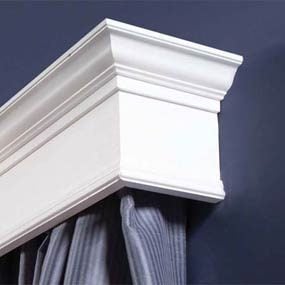
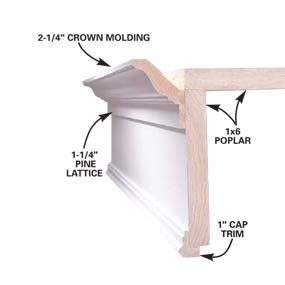
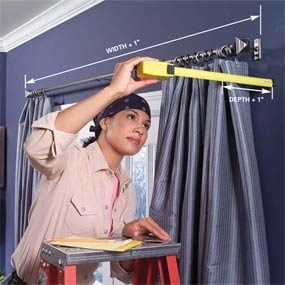
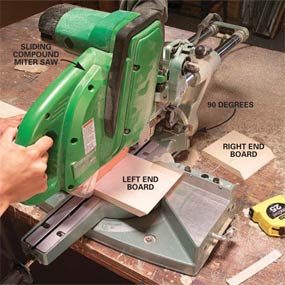


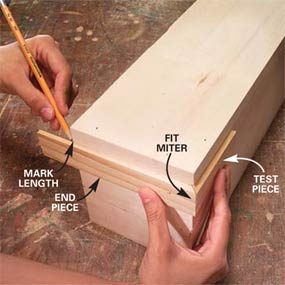

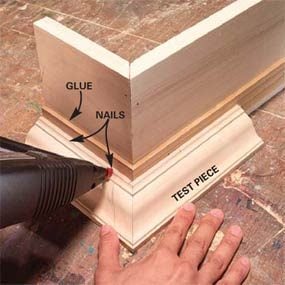
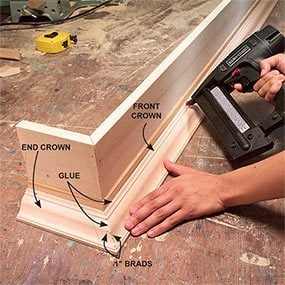
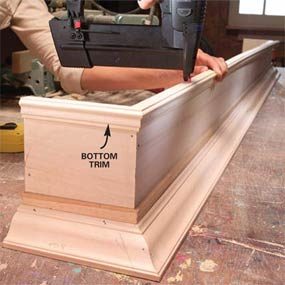
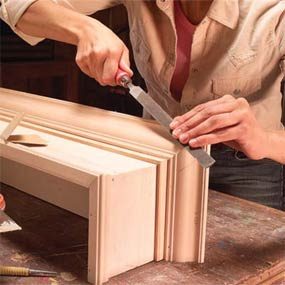
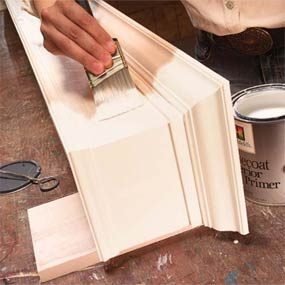
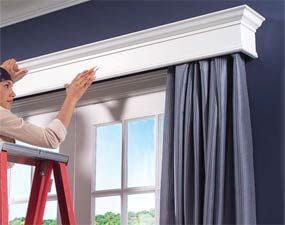

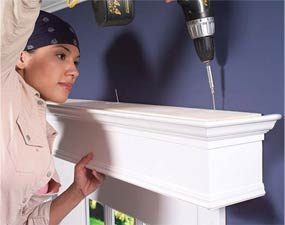

0 Response to "How To Make A Window Cornice"
Post a Comment